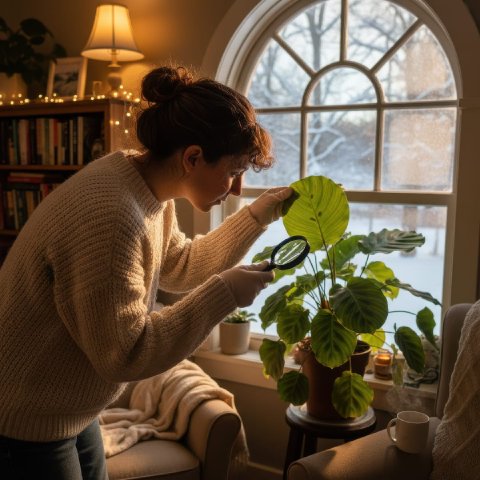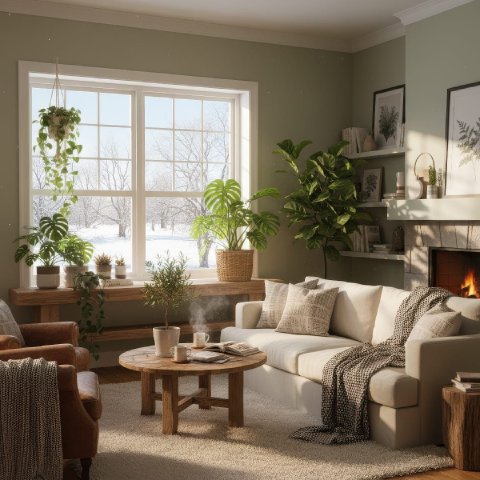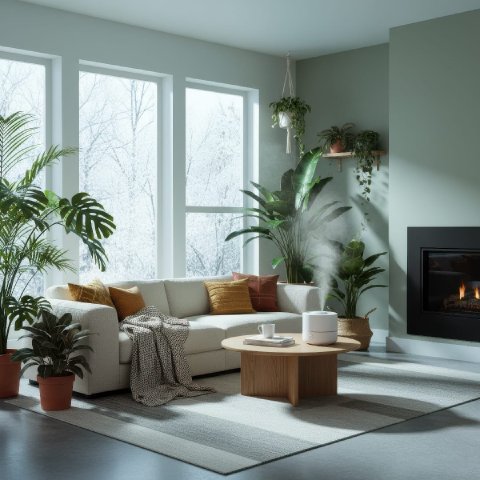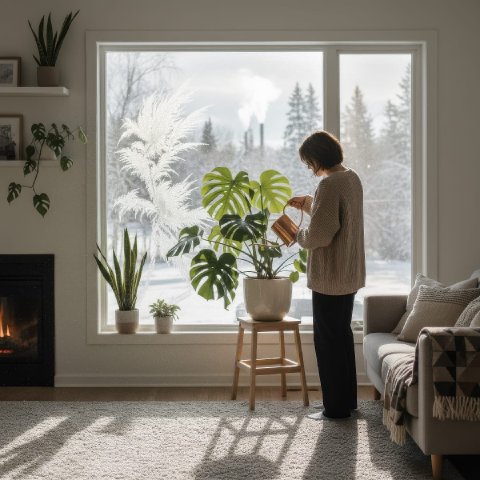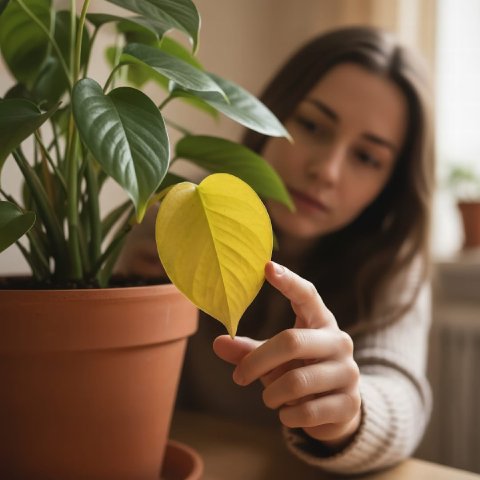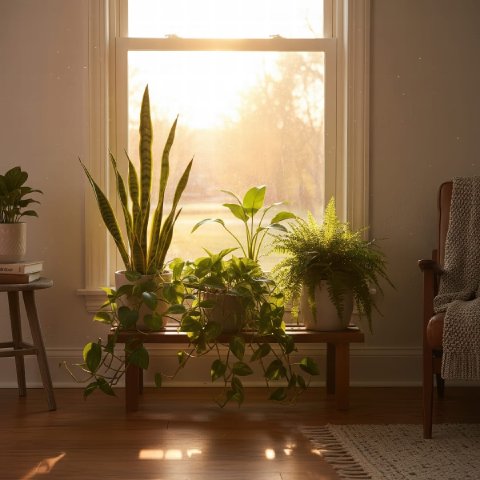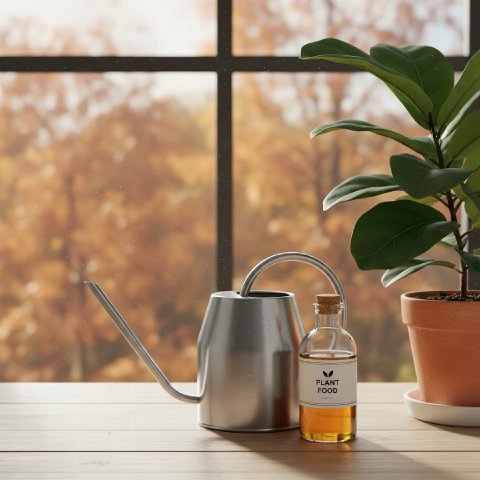🪴 In This Guide 🪴
☀️ Adjusting to Light Changes
As the days shorten and the sun’s intensity wanes, your houseplants will receive less light. The bright, sunny spot that was perfect in July might be too dim by October.
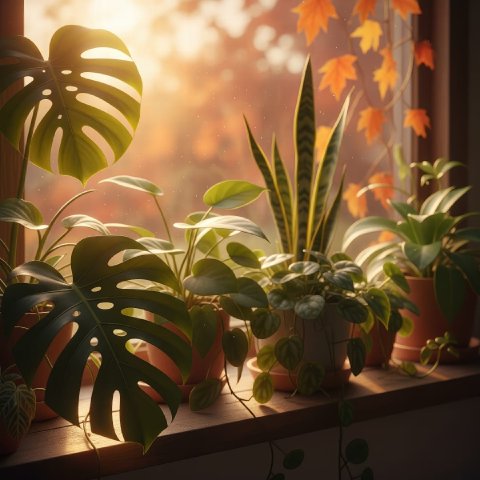
To help them make the most of the available light, you can move your plants closer to a window. Don’t worry about leaf scorch at this time of year; the autumn sun is much gentler. You can also give their leaves a gentle wipe with a damp cloth. Clean leaves can absorb sunlight more efficiently. For those in darker homes, a grow light can be a great investment to supplement natural light.
Want help judging your light? Use our simple Houseplant Light Guide to find the perfect spot this season.
💧 Watering Adjustments
With less light and slower growth, your plants’ water needs will decrease significantly. Overwatering in the fall and winter is one of the most common houseplant problems, and it can lead to root rot.
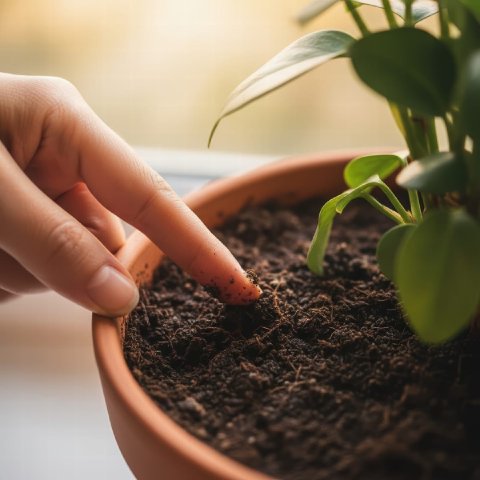
The “finger dip test” is your best friend. Before watering, stick your finger about two inches into the soil. If it feels dry, it’s time to water. If it’s still damp, wait a few more days. You’ll likely find that your watering schedule shifts from weekly to once every two weeks or even less. When you do water, do it thoroughly, allowing the excess to drain away completely.
New to seasonal watering? See our Ultimate Watering Guide and, for large pots, try a moisture meter to check moisture deeper in the soil.
🔥 Early Heating Season Prep
The day we turn on the heating is a big change for our plants. Central heating creates a dry environment, which is the opposite of the humid, tropical conditions most houseplants love.
Boost Humidity
You’ll want to increase the humidity around your plants. Grouping them can create a more humid microclimate. You can also place them on pebble trays filled with water or, for your most sensitive plants, run a cool-mist humidifier nearby. You might also find our article on plants that love humidity helpful.
For step‑by‑step methods, visit our Beginner’s Guide to Houseplant Humidity.

Watch for Drafts and Vents
Keep your plants away from cold drafts from windows and doors, as well as direct blasts of hot air from heating vents or radiators. Consistent temperatures are key to a happy plant.Stop Fertilizing
Most houseplants go into a dormant period in the fall and winter, so they don’t need to be fed. Stop fertilizing around the end of September. Feeding them when they’re not actively growing can do more harm than good.
Learn more in our full guide to fertilizing houseplants.
Hold Off on Repotting
Autumn is not the time for repotting. Since the plant isn’t in a growth phase, it will have a harder time establishing its roots in a new pot. Wait until spring unless it’s an emergency. For more on this, see our guide to repotting.Tidy Up
It’s normal for some leaves to yellow and drop as your plant prepares for winter. Prune away any dead or dying leaves to keep your plant looking its best and to prevent any potential pest or disease issues.📝 Autumn Care Checklist
Here’s a quick rundown of your autumn houseplant care tasks.
